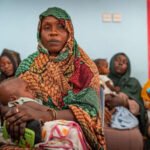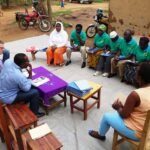A recent report by the United Nations Children’s Fund (UNICEF) has revealed that 80.6 percent of children in Namibia are exposed to severe water shortages.
Development Diaries reports that 739 million children were exposed to high or extremely high water scarcity in 2022, according to UNICEF, with Namibia named as one of the most impacted countries.
According to the report, titled The Climate Change Child, more than two-thirds of the 295 million children who lacked basic drinking water services lived in Eastern and Southern Africa (110 million) and in West and Central Africa (97 million) in 2022.
Water scarcity is likely Namibia’s biggest problem, as it is the driest country in Southern Africa among the driest countries in Africa.
Water is an essential resource for sustaining life, and its scarcity in Namibia has far-reaching consequences for health, education, and overall well-being.
One of the most immediate and critical consequences of water scarcity in Namibia is its impact on the health of children.
Limited access to clean and safe water increases the risk of waterborne diseases, such as diarrhea and cholera, which disproportionately affect young children with weaker immune systems.
Also, insufficient water for hygiene and sanitation increases the spread of diseases, leading to a cycle of illness that hampers the overall health and development of Namibian children.
Water scarcity also intersects with the realm of education, as children in Namibia grapple with the consequences of inadequate water supply.
The time spent fetching water from distant sources diverts children, especially girls, from attending school regularly.
Furthermore, the lack of water in schools hampers hygiene and sanitation, creating an environment conducive to the spread of diseases and hindering the overall learning experience.
In a country where agriculture is heavily dependent on water, the scarcity of this resource affects food production, thereby influencing the nutritional status of Namibian children.
Development Diaries calls on Namibia’s Ministry of Agriculture, Water and Land Reform to prioritise investment in infrastructure to address the water needs of children.
Photo source: Mutungadavid







